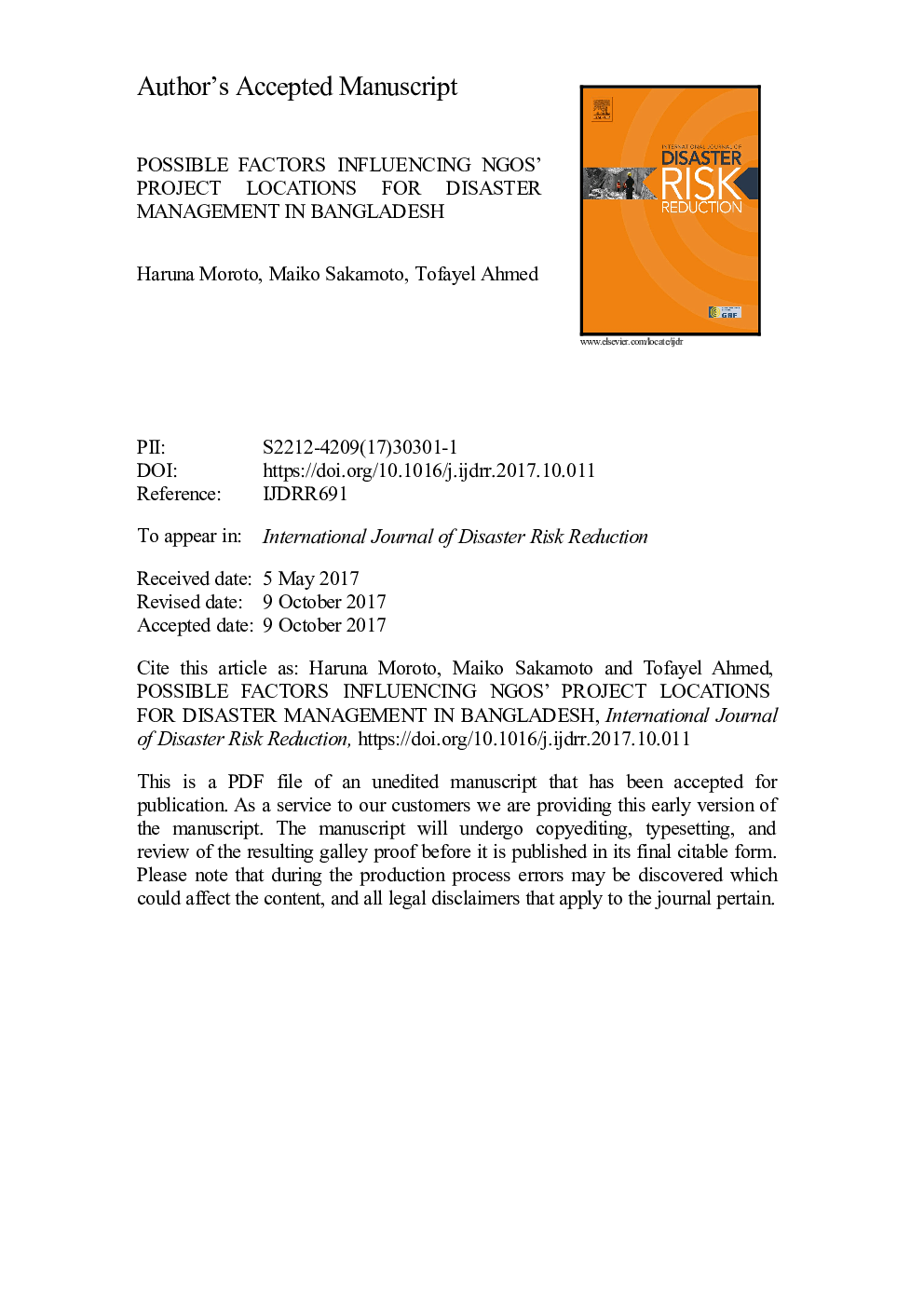| Article ID | Journal | Published Year | Pages | File Type |
|---|---|---|---|---|
| 7471945 | International Journal of Disaster Risk Reduction | 2018 | 23 Pages |
Abstract
Although non-governmental organizations (NGOs) are important actors in the field of disaster management (DM) in natural disaster-prone countries such as Bangladesh, the spatial distribution of their activities and factors influencing their site selection are not well researched. Therefore, this research elucidated the spatial distribution of NGOs working in DM in Bangladesh for the past seven years with a geographic information system (GIS) and used logistic regression to analyze possible factors influencing their decisions on project locations. Based on our data, at the sub-municipal (i.e., union) administrative level, NGOs did not generally locate in disaster-affected or disaster-vulnerable areas; rather, they located in areas that were more accessible. Thus, we found a scarcity of NGO interventions in disaster-vulnerable areas, meaning that there is a scarcity of interventions for those who need support the most. Further, using the results from the regression modelling, we calculated the probability of each sub-municipal area being selected by NGOs for their activities, and revealed the socially disaster vulnerable areas where NGOs are less likely to intervene. Further, we superimposed the probability distribution on the hazard map, and identified both socially and physically disaster vulnerable areas.
Related Topics
Physical Sciences and Engineering
Earth and Planetary Sciences
Geophysics
Authors
Haruna Moroto, Maiko Sakamoto, Tofayel Ahmed,
